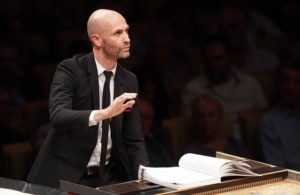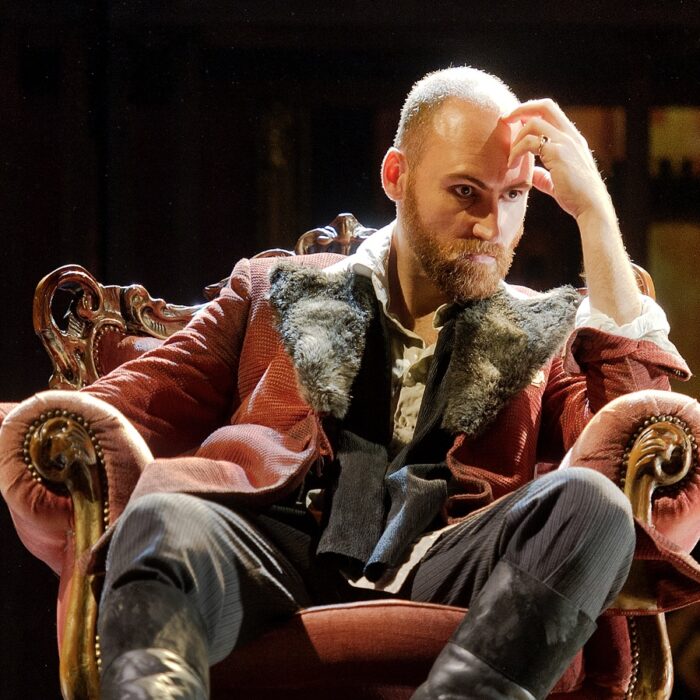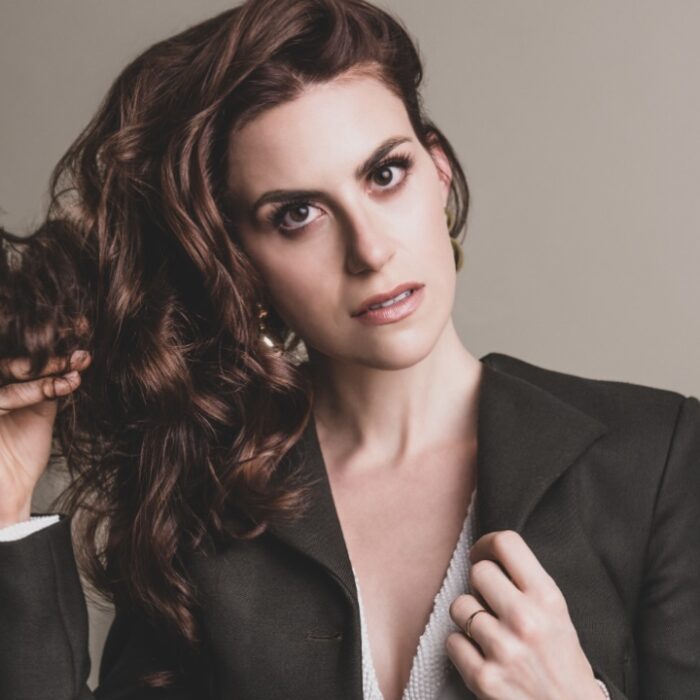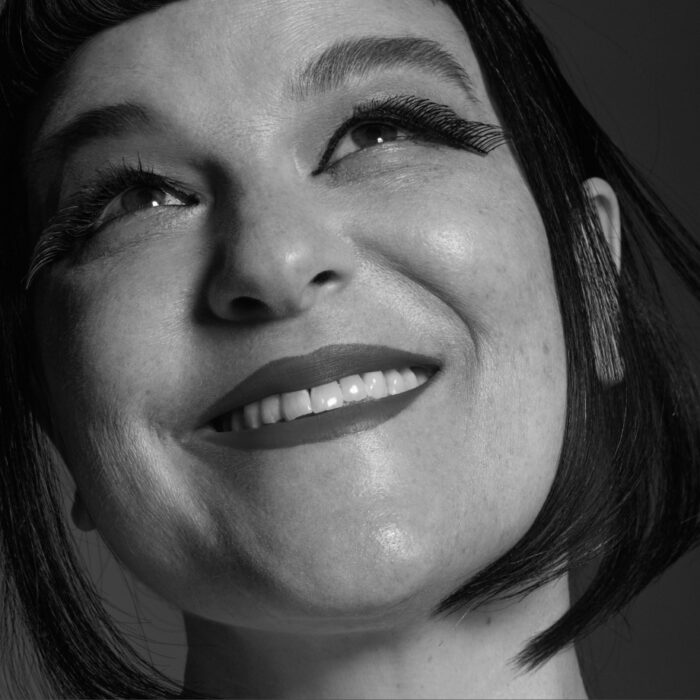
Q & A: Pinchgut Opera’s Erin Helyard On Winning An International Opera Award & Moving Forward
By Gordon WilliamsSydney-based Pinchgut Opera became the first Australian company to win an International Opera Award when it was recently awarded best “Rediscovered Work” for Hasse’s 1740 “Artaserse” at this year’s Awards in London.
OperaWire talked to the organization’s Artistic Director, Erin Helyard about the company’s beginnings, upcoming projects, and future endeavors. .
OperaWire: What is Pinchgut? What is its brief and how do you personally identify with that?
Erin Helyard: Pinchgut is an opera company dedicated to mounting performances of 17th and 18th-century opera. We were originally formed as a “chamber opera” company, and we fell into baroque opera a little by chance. There was most definitely a niche to be filled for good performances in this genre in Sydney, and slowly we established ourselves as specialists. We have always championed neglected masterpieces from the very beginning, even as we present more familiar works as well. As a musicologist by training I enjoy the challenge of hunting down composers and works that (for whatever reason) have fallen off our radar. It is an especially satisfying challenge to bring them to life again with the help of the wonderful team of diverse creative people that only opera can nourish.
OW: What is it like for Pinchgut to have won this award? How does it affect your forward planning?
EH: We were absolutely thrilled, as best Rediscovered Work really speaks to our core beliefs as a company. And to be recognized by our peers in Europe was especially exciting. The award has opened up a whole bunch of opportunities for us and I think it has also promoted a global awareness of the company. Most importantly, it acknowledges the high quality of performance that is taking place in Australia. We’re hoping to expand our footprint beyond the east coast of Australia and this award will hopefully help us in our journey.
OW: You’ve recently returned to Sydney? What were you doing immediately prior to this appointment?
EH: I have been a full-time academic for the last seven years and during that time I’ve lived in three cities. After completing my PhD in Montreal I moved to Wellington, and then to Canberra, and finally to Melbourne. It has been unexpectedly emotional for me to now return to the city that I last left as a resident when I was 25 years old. I am in awe of my colleagues who can combine teaching with research and balance the demands of musicology with the demands of performance. I’m reminded of Pierre Baillot, one of the first professors of the violin at the Paris Conservatoire. He found it difficult too. In 1805 he wrote, regretfully, “Quand on fait le métier il faut renouncer à l’art” (“When one takes up the profession [of teaching] you have to give up the art”). Unlike Baillot, who made teaching a central part of his later life, I’ve decided to pursue other avenues, at least for now. So although I have enjoyed my time in the university sector, it is liberating (if financially risky!) to be pursuing a career as more solidly focused on Pinchgut and also my own performance career.
OW: Tell us a bit about the Hasse opera for which you won, please. What made you choose it?
EH: This was a collaborative effort between Vivica Genaux and myself. We are both steadfast advocates and exponents of Hasse’s work. We were searching for an opera in which to showcase Vivica and also our extraordinary cast. We finally hit upon the Dresden revival of “Artaserses” as the role of Mandane was especially revised by Hasse to display the talents of his wife, Faustina Bordoni. That was the role that Vivica created. Although the 1730 version of this opera has been recorded and staged before, the substantial revisions made by Hasse make the 1740 work an entirely different work, with many arias being newly composed for new voices and a crack orchestra.
OW: Is there a key moment you would recommend to someone to understand what makes this work so special?
EH: Hasse was especially fond of accompanied recitative and he uses this to highlight moments of great drama, where the tensions in Metastasio’s drama are almost at breaking point. The most dramatic accompanied recitative occurs before Artabano’s superb aria “Pallido il sole”. Here the father wrestles with his conscience in a dramatic scene that was to become something of a classic. Rousseau in his “Lettre sur la musique française” of 1753 spoke of this scene as being one of the greatest achievements of Italian opera. And Charles de Brosses, a great connoisseur, considered the aria to be “the most beautiful of the seven or eight hundred arias that I had copied from various operas. [Hasse] is a most learned composer: his operas are crafted with great taste, expression, and harmonic skill.” Philip V asked that Farinelli sing him “Pallido il sole” every night for almost a decade.
OW: And of course, this “Artaserse” was an often-set text. Do you have any thoughts on how the Hasse setting compares with Galuppi’s or Vinci’s versions?
EH: Metastasio’s “Artaserse” was something of a classic in the 18th century. It was set over 50 times by many different composers between 1730 and 1760. “Artaserse” is characterised by conflicts that affect all of the characters equally and a theme of injustice suffuses the entire drama and propels the narrative. Thus the composer in each case is given a remarkable opportunity to demonstrate the musical portrayal of these tensions. Audiences thrilled at the clash of two families: one born to rule (Artaserse and Mandane) and the other not of royal blood (Arbace, Semira, and Artabano). These different settings naturally reflect the rapidly changing tastes of operatic practice as well, so it is fascinating comparing them (as audiences would have done then too).
OW: You’ve only recently become the Artistic Director of Pinchgut but can you offer some insight into how you will be deciding what opera(s) to do over the next several seasons?
EH: I look to the past to the great opera directors of the past for inspiration: Handel, Hasse, Vivaldi—they all worked as impresarios and worked hard to present a varied content for their audiences. I try to alternate Italian opera seria with French tragédie en lyrique and 17th-century Italian opera and English masque and many other genres besides. It is such a rich tapestry that it is a big challenge, but immensely satisfying when you get it right!
OW: What is the audience like for baroque music in Australia?
EH: Baroque music is very popular here as it is all over the world. I think audiences especially love the spectacle and virtuosity of baroque opera.
OW: Where does the name Pinchgut come from?
EH: Pinchgut was the name given to an island in the middle of Sydney Harbour after a convict in 1788 was sentenced to spend a week there clapped in irons with nothing but bread and water. In the 1840s it became a fort and was called Fort Denison but Sydneysiders have always known it as Pinchgut. Because it’s in the shadow of the great Sydney Opera House, we thought it was a distinctive name for our fledging company and it has stuck ever since.
OW: What’s next for Pinchgut?
EH: I’m currently in rehearsals for Monteverdi’s “Ulysses” and I’m also listening to the first edit of our world premiere recording of “Artaserse”. So I’m in heaven! We have Valer Sabadus coming soon for a vocal concert and we close the year with Vivaldi’s “Farnace”. Lots to do.
OW: And for you?
EH: I’m soon to record some more Schubert songs with one of my closet colleagues, David Greco and I’m also finishing up a book about the intersections of piano music, gender, and market in late 18th-century London. I am so honoured and lucky to be working with magnificently talented people doing what I love: I keep pinching myself!


